Long Funny Technical Word for Rock
Some rock climbing terms will be familiar to anyone who has ever set foot on a crag – that's a rock face, by the way. But when a veteran climber smiles at you at the end of a climb and exclaims: "Ah, I was totally gripped on that chossy traverse, and I had a flapper by the time I reached the crux. Luckily, I'd put in a few bombers, so I knew it'd be okay," you'd be forgiven for thinking you'd set foot in a strange new country. And just when you thought you knew your gastons from your Gri-gris!
As with any pursuit, unique lingo has sprung up around climbing and stubbornly held on with all the character and defiance of an alpine plant clinging to a crag. Some rock climbing terms drift into the mainstream, helped along by media coverage, film productions and bestselling books. A term like 'choss', used to describe loose terrain, could easily be used by a walker lugging their hiking backpack up a scree slope.

However, some rock climbing terms remain firmly in the shadow of the crag, known only to those in climbing shoes rather than their best hiking shoes, or anyone else for that matter. No one in the office has showered praise on a colleague by calling them a wad; no one describes the way they hold their coffee cup as a guppy; and no one climbs a new staircase before boasting to their partner that they'd done an on-sight ascent.
So, to bring these terms into the light, here's our guide to some of the most commonly used rock climbing terms.
Rock climbing terms: the basics
The basic terms that most people will know, even those who've just started to train for rock climbing.
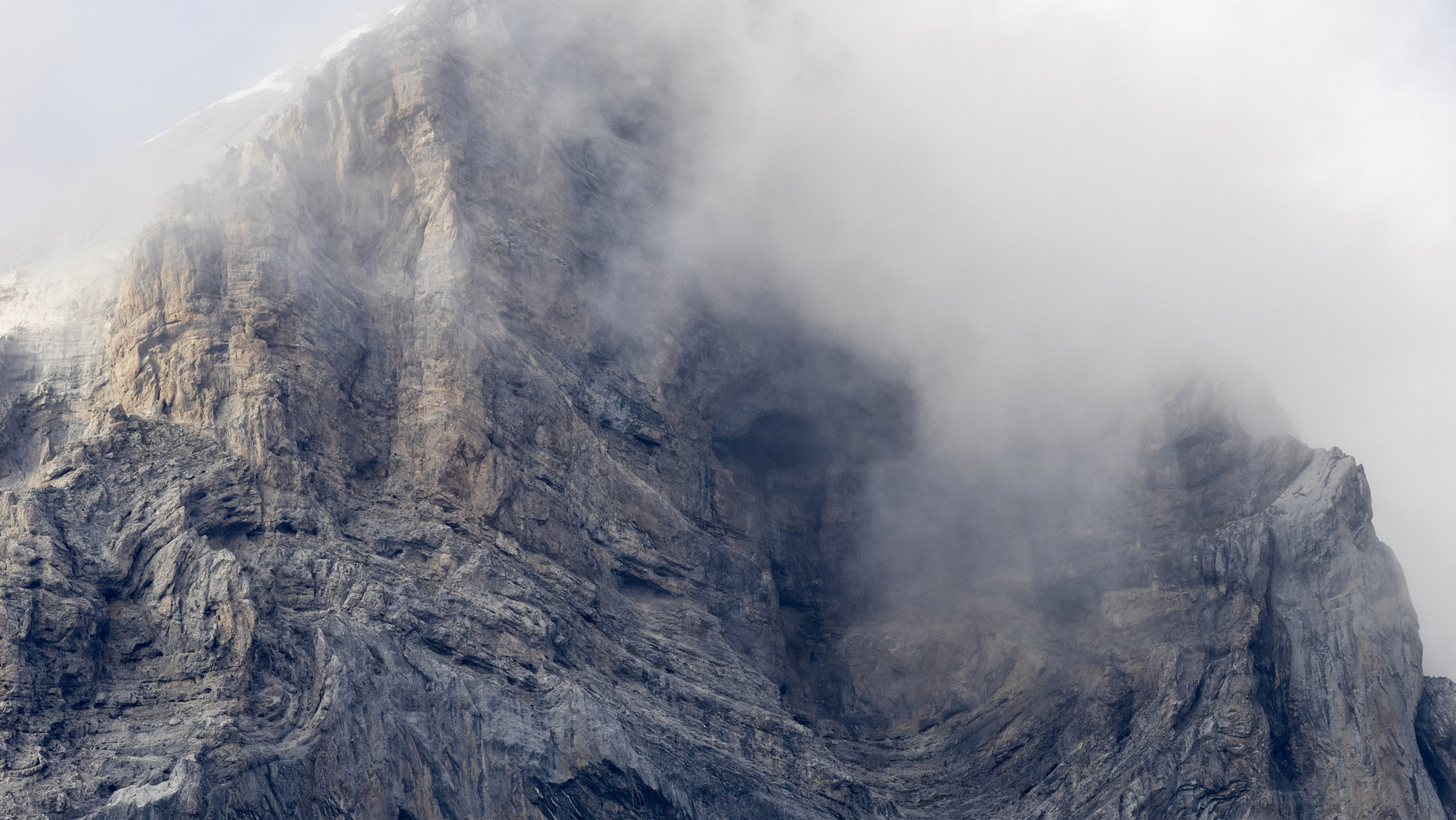
Crag: a cliff or rock feature.
Gym: indoor climbing wall.
Lead: the person leading the climb.
Second: the person following the lead up.
Belayer: the person that manages the rope, protecting the climber against a fall.
Pitch: a part of a climb that is completed using one rope length.
Stance: a place where a climber stops at the end of a pitch to secure a belay.
Anchor: an arrangement of gear set up to support the weight of a belay or top rope.
Rock climbing terms: types of climbing
There are a variety of approaches to climbing. Some require certain weather conditions, some venture up without ropes and all have a rating system to indicate route difficulty and quality.
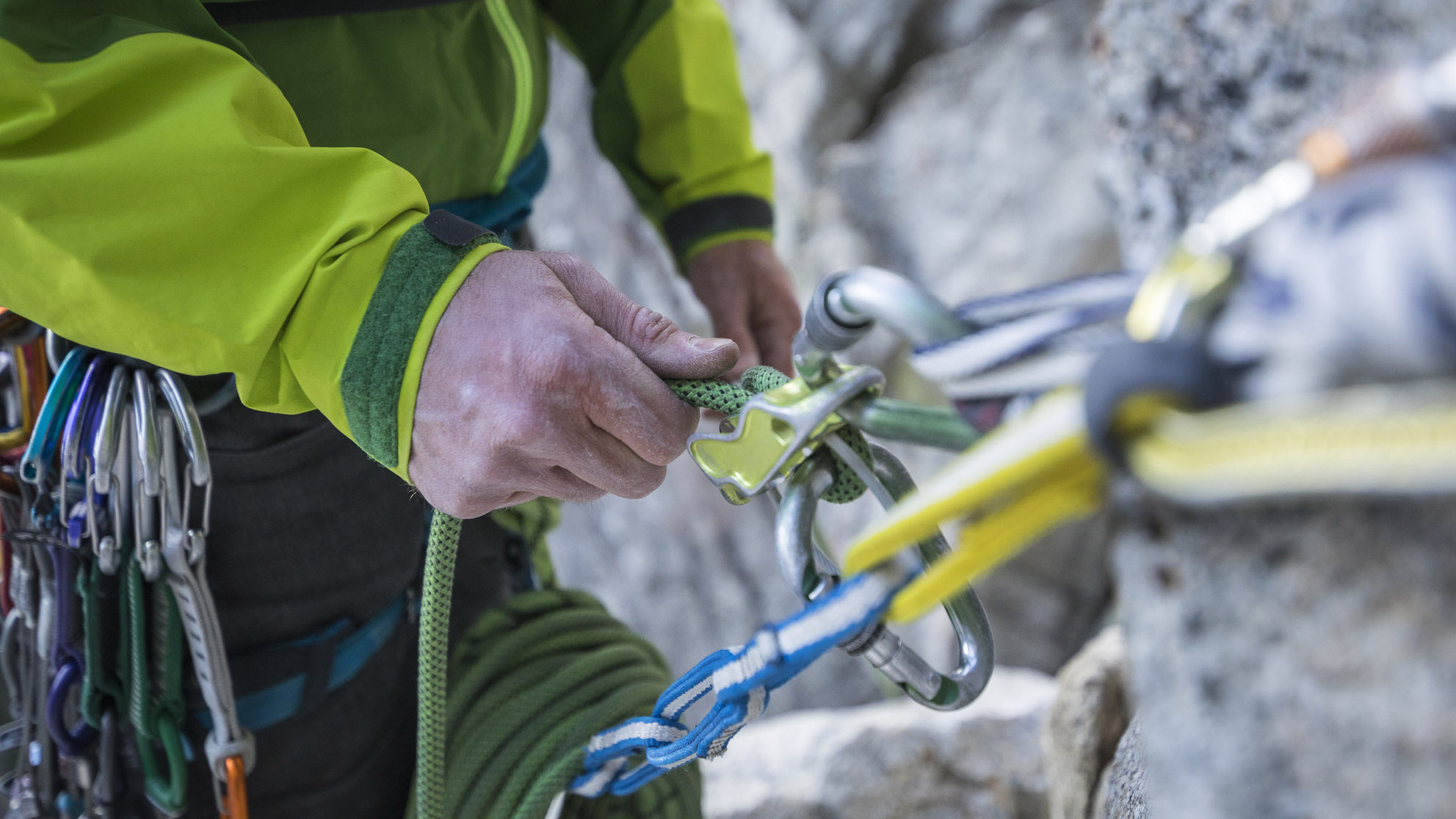
Trad climbing : roped climbing where the leader places protection onto the crag as they climb, which is then often removed by the second on their way up.
Sport climbing: climbing that makes us of pre-installed protection, such as bolts in the rock.
Soloing: rock climbing without rope.
Deep water soloing: (often abbreviated to DWS) rock climbing without a rope above deep water.
Top rope: the kind of climbing often found at a gym or on an artificial wall. The climber is attached to one end of the rope, which is passed over an anchor at the top of the climb and back to down the belayer.
Bouldering: unroped climbing on usually technically challenging boulders that are low enough to fall from safely, often onto a mat.
Highball bouldering: technically challenging boulder problems at a greater height than usual bouldering.
Scrambling: the grey area between hiking and rock climbing where hands are required but the terrain isn't serious enough to warrant a climbing grade and hiking shoes or boots are usually worn. Climbers will often scramble to the start of a more technical climb in their approach shoes.
Winter climbing: ascents of steep snow slopes or mixed rock and ice that require the use of crampons and at least one ice axe.
Ice climbing: steep climbs on frozen ice, requiring crampons, two technical ice axes and usually ropes.
Single-pitch: a climb that is short enough to only warrant the use of one rope length.
Multi-pitch: a longer climb involving more than one rope length.
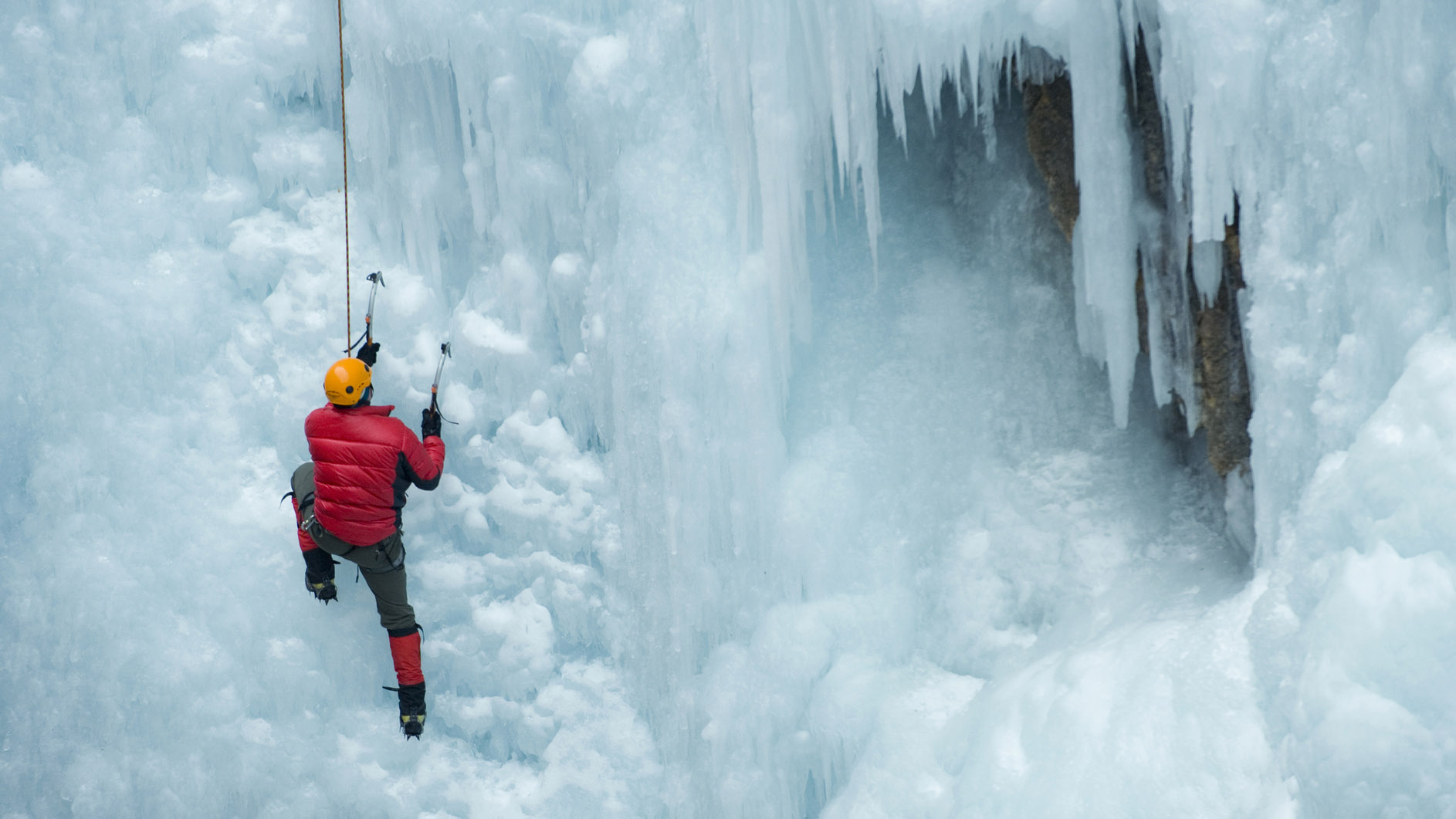
Rock climbing terms: styles of ascent
The style by which you ascend is as important as the technicality of the route for some. There are rock climbing terms for every style and approach.
On-sight: to complete a route cleanly at the first time of asking in one continual flow with no falls or resting.
Ground up: as it sounds, this involves climbing the crag from the ground all the way to the top in one go. If you take a fall, it can still count as a ground up ascent, as long as you return to the ground and start again.
Beta: when you've received hints and tips about difficult moves or handy gear placements from climbers who have already done the route.
Headpoint: leading a technically challenging climb having rehearsed the moves previously using a top-rope.
Redpoint: climb a route with no rests having previously rehearsed the moves. Usually applies to sport climbing routes.
Flash: to complete a climb cleanly at the first time of asking, having receive beta or conducted research on the route.
Rock climbing terms: words to describe terrain
The first time you pick up a guidebook, the descriptions can be a little daunting, with talk of finding your way up chimneys and slabs. Rock is rock, right? However, once you get out there, the climbing terms used to describe different features in the terrain start to make sense.
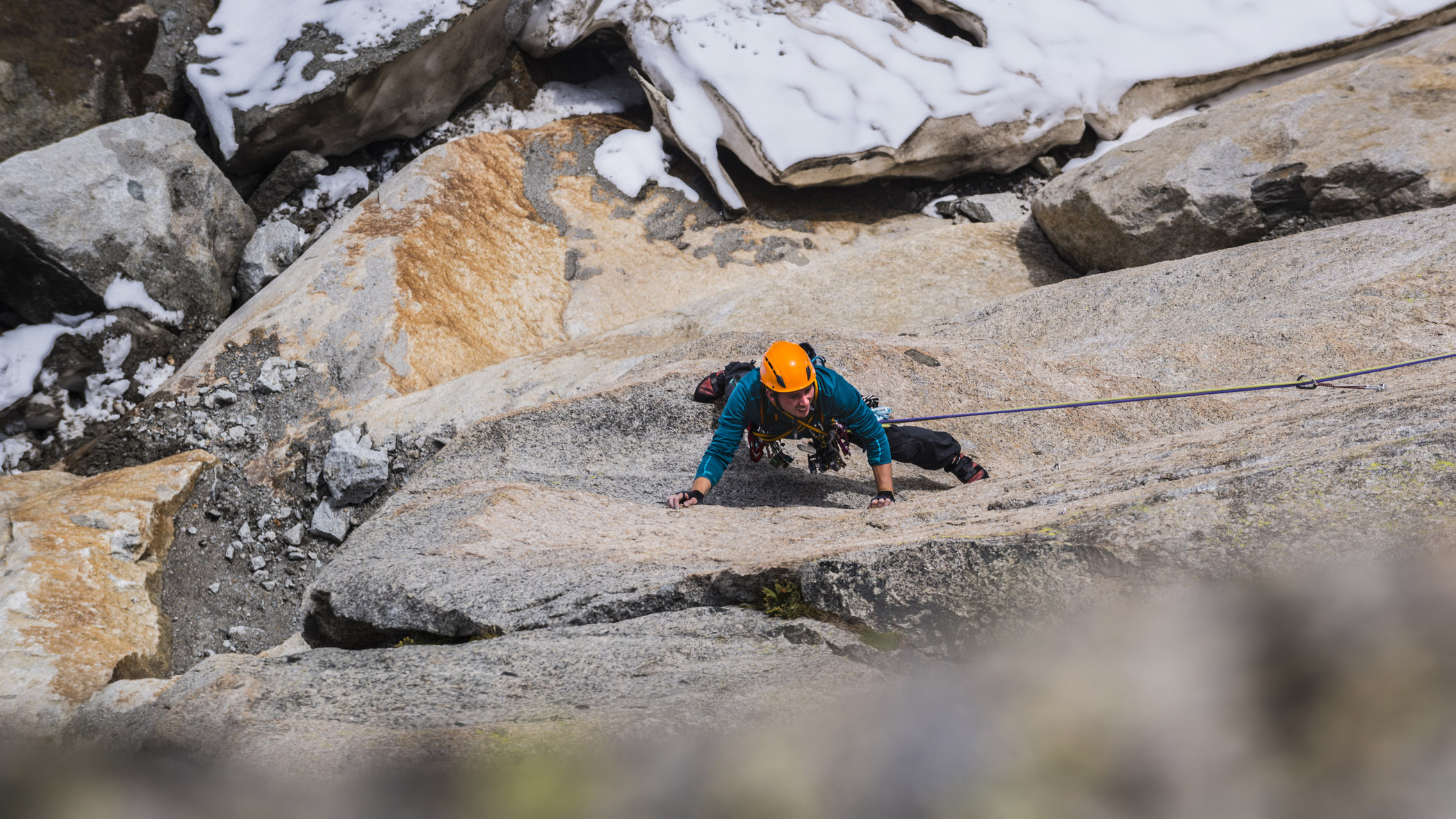
Arête: a narrow ridge of rock.
Buttress: a large protruding face or area of a crag.
Gendarme: a pinnacle of rock on a mountain ridge.
Chimney: a crack or vertical fissure large enough for your whole body to enter.
Slab: a rock face at a less than severe angle.
Chock: often referred to as a chockstone. A large rock or boulder wedged in a crack.
Corner: the inverse of an arête, an inside corner of rock.
Edge: a narrow ledge on the crag.
Flake: in terms of terrain, this is a slab of rock that's detached from the main rock. face.
Flute: a fin or flake of rock, often insecure.
Horn: also known as a spike. A pointed protrusion of rock that makes for a good hold or anchor.
Off-width: a crack in the rock face that's not quite the dimensions of any body part, often awkwardly wider than a fist but smaller than your body.
Overhang: a section of the crag angled beyond vertical.
Rock climbing terms: equipment
We're gonna go ahead and assume you know what ropes, helmets and harnesses are and instead detail some of the less well-known items in a rock jock's arsenal.
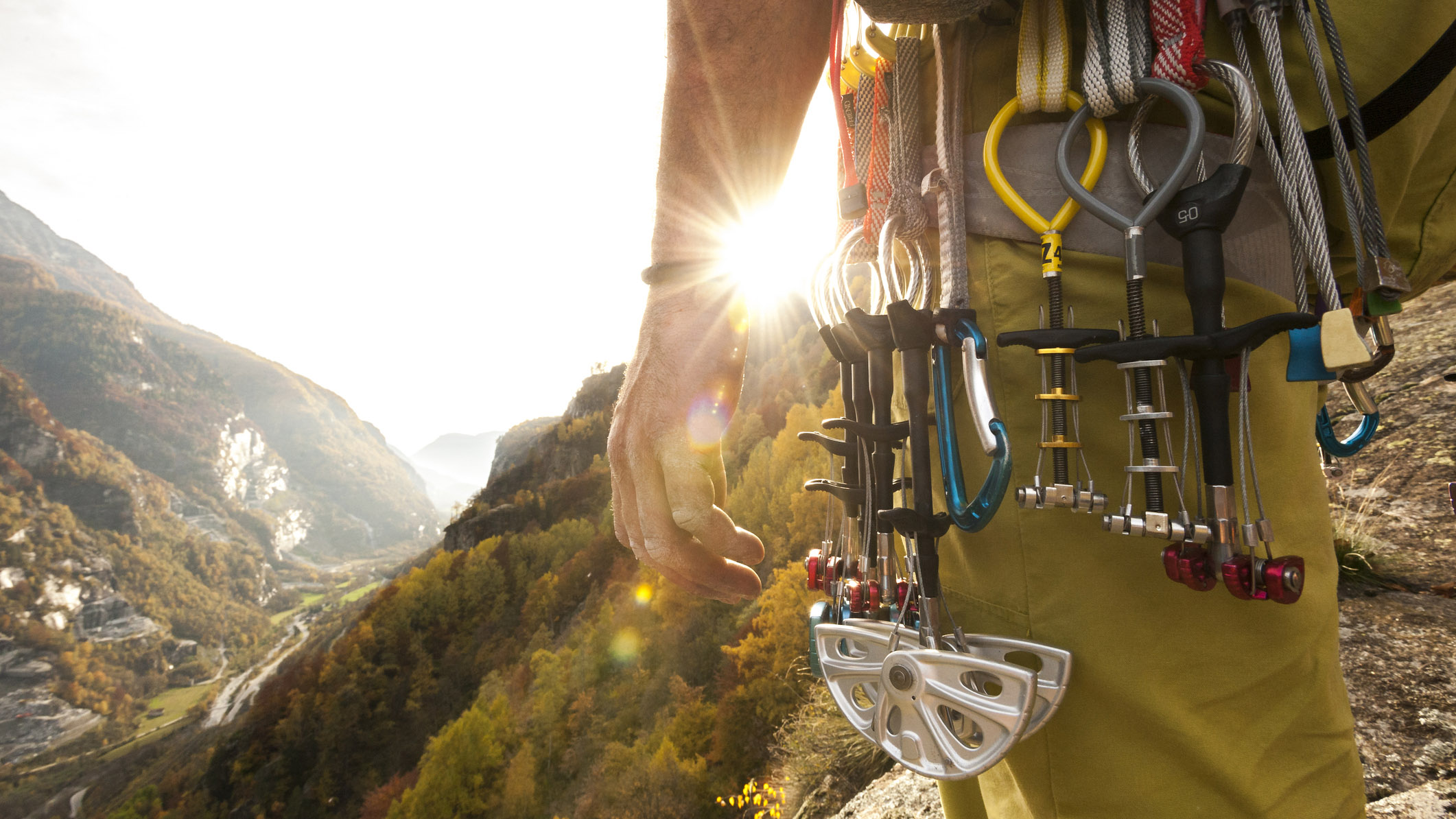
Quickdraw: often referred to as an extender. Two linked carabiners that clip between your rope and the protection on the crag.
Nut: a small metal wedge attached to a loop that a climber inserts into cracks to provide protection against a fall.
Hex: a large hexagonal nut attached to a loop. Like a nut, it is inserted into cracks in the rock and provides protection against a fall.
Cam: a spring-loaded device that can be compressed to fit into a crack and then expanded to grip and provide protection against a fall. Some brands refer to these as cams while others refer to them as friends.
Nut key: sometimes referred to as nut tools. Thin, hooked tools used to dislodge gear that becomes stuck after being placed in cracks.
Gri-gri: an auto-locking belay device made by Petzl.
Rock climbing terms: holds
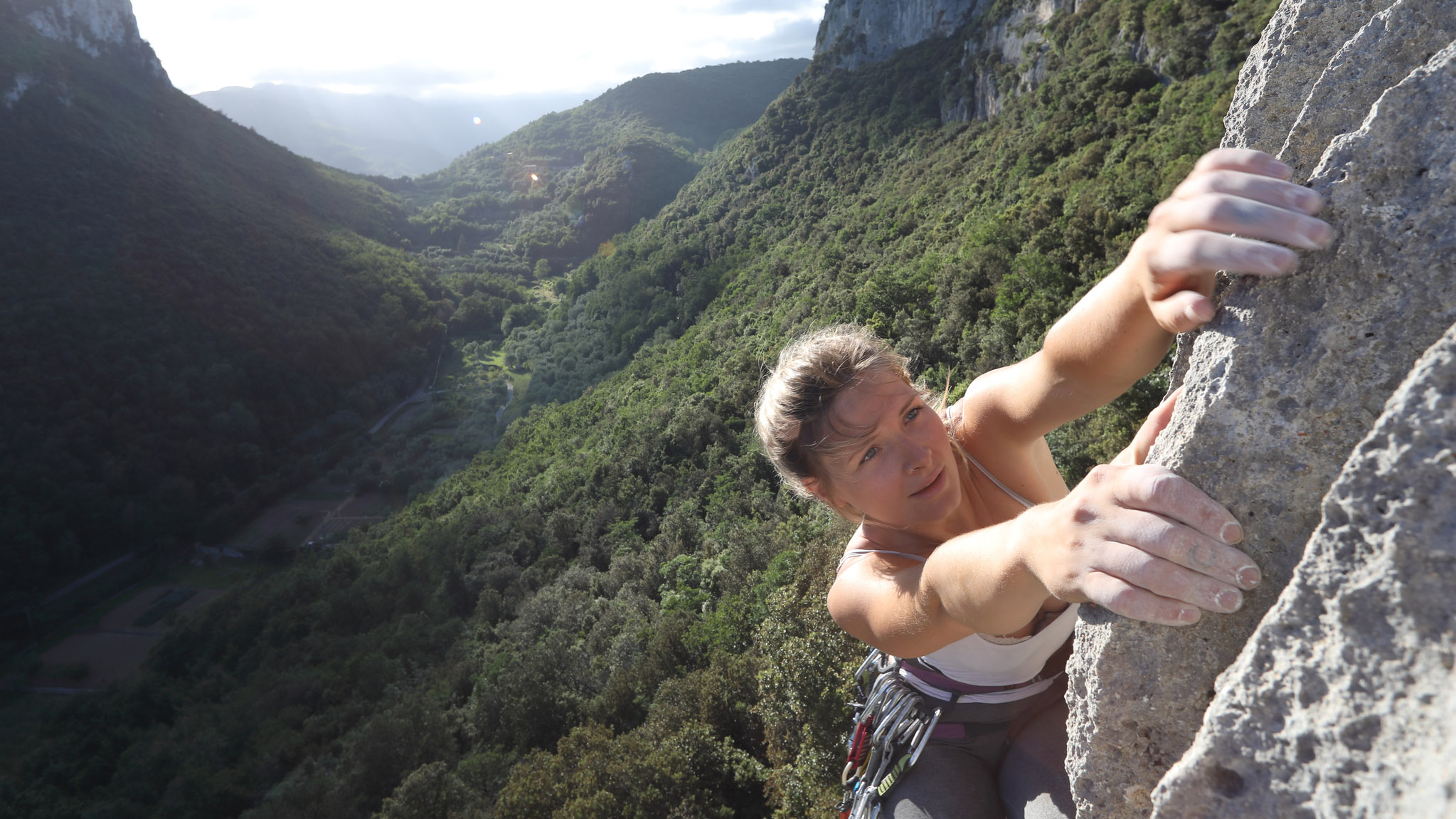
Jug: a large hold that is easily held.
Bucket: an even bigger, better hold.
Undercut: a down-facing hold which is gripped with the palm of the hand facing upwards.
Pocket: a small hole or hollow in the rock that only accommodates a finger or two.
Bomber: a totally secure anchor. Can also be used to describe a very good hold, such as a large jug.
Crimp: a tiny edge that requires the climber to bend their fingers in order to effectively grip the rock.
Pinch: a small hold that is gripped by pinching it between thumb and finger.
Rock climbing terms: moves
Once you know your holds, you can work out the moves to go with it. We're not talking about yoga for rock climbers, there'll be no downward dogs on the crag. No, here we're talking about physically challenging contortions and athletic bursts of power.
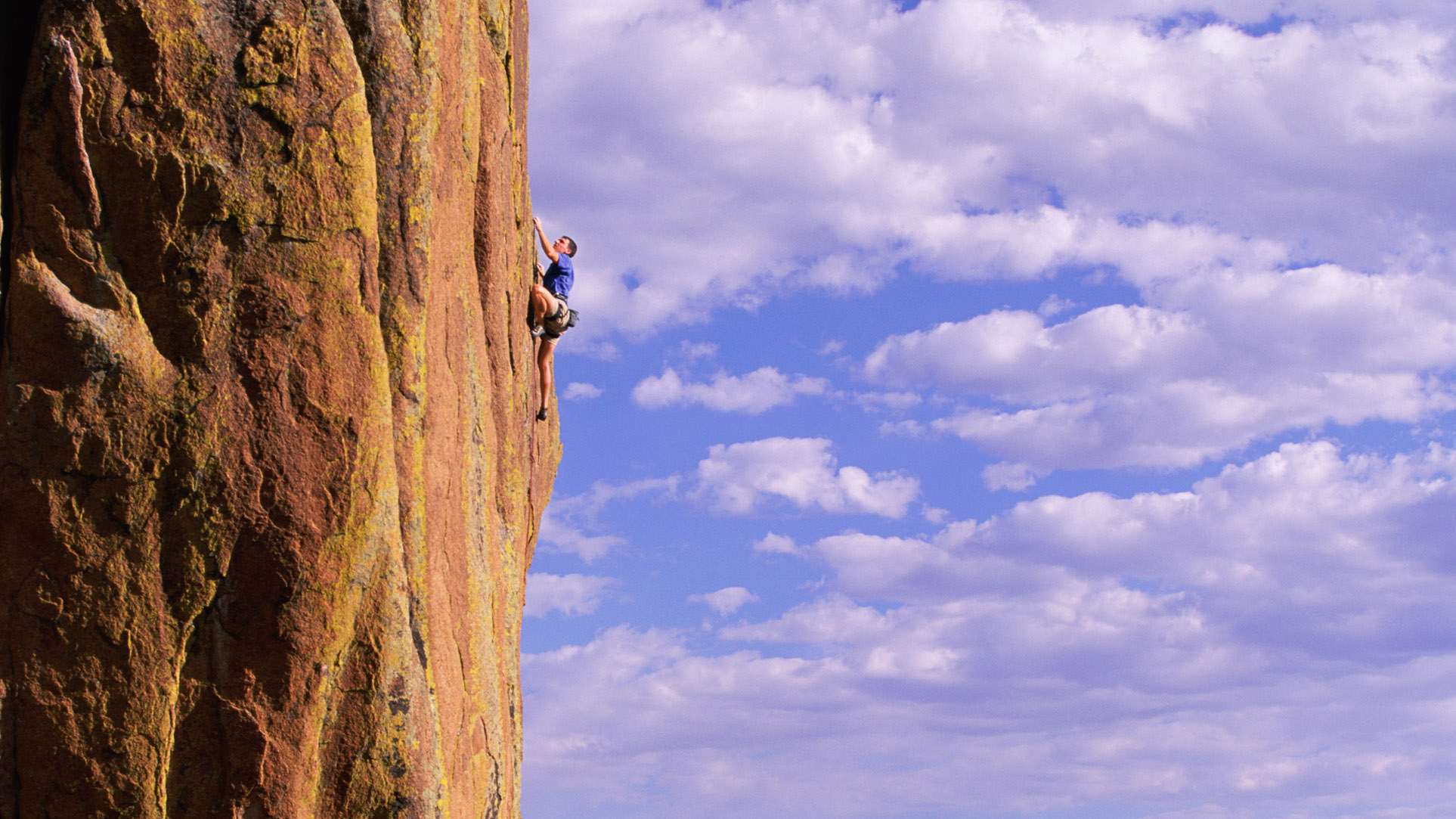
Abseil: when a climber descends a fixed rope. All known as rappelling.
Dyno: a leap where both feet leave the rock face and return again when the hold is caught – think Tom Cruise at the start of Mission Impossible 2.
Smear: placing the sole of the foot to create a high amount of friction on relatively featureless rock.
Flag: Sticking a leg out to remain in balance when climbing.
Heel hook: using your heel on a hold to pull your body upwards.
Gaston: named in honour of the great French alpinist, guide and author Gaston Rébuffat, it's a grip that involves pushing a hold with your thumb pointing down and your elbow out, thus creating friction against the hold.
Hand jamming: putting your hand into a crack and squeezing so that it jams in and grips.
Layback: a move characterised by gripping the rock and pulling your hands towards your body, while pushing away with your feet.
Bridging: Applying around equal pressure with both hands and feet to bridge between rock features.
Egyptian: with feet on separate footholds, one leg is turned so that its knee faces the other. This takes the strain off your arms when on a steep face.
Rock climbing terms: terms used to describe the experience
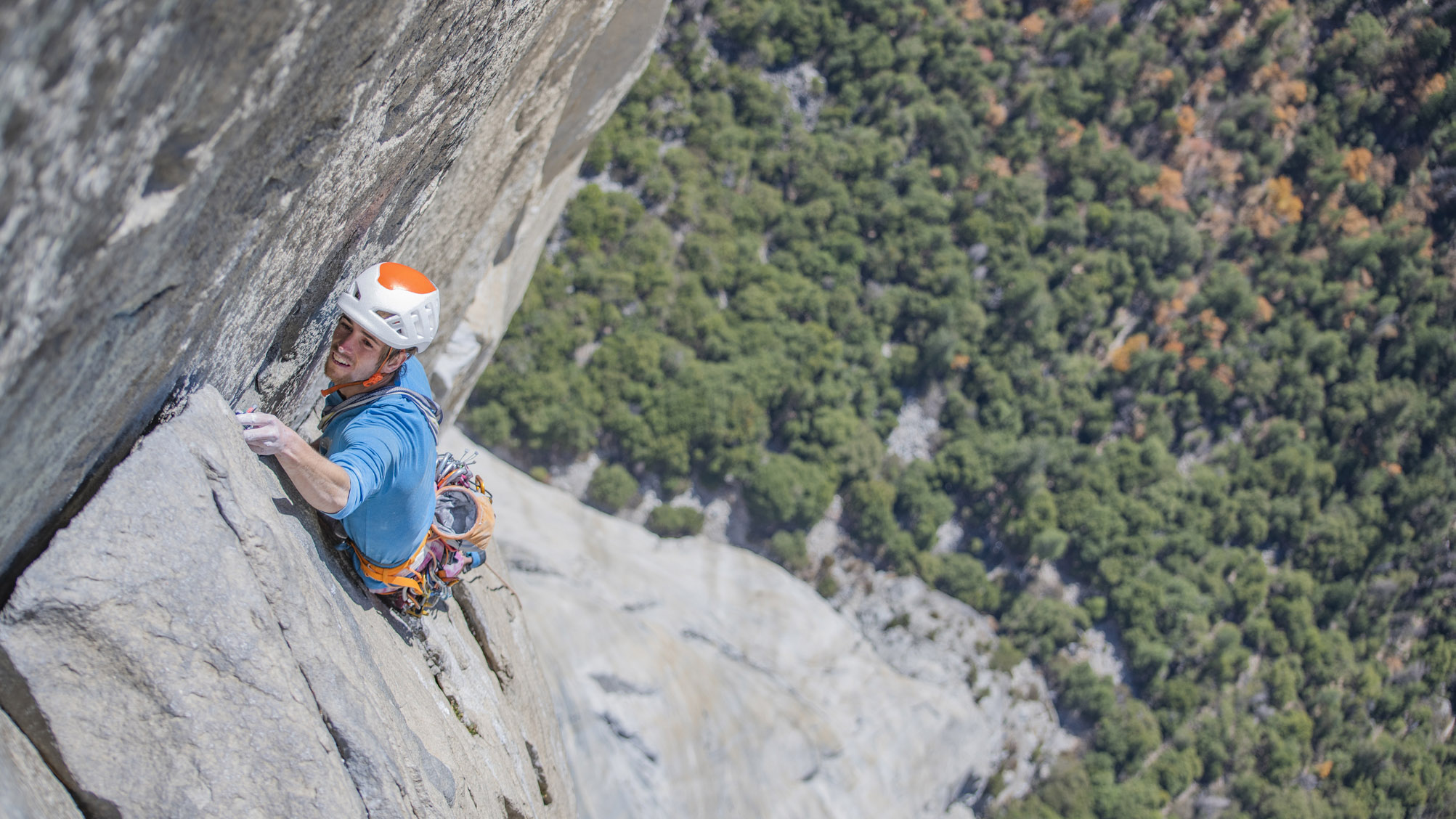
The experience of rock climbing is pretty unique, as is the slang that describes aspects of the experience.
Crux: the most technically demanding section of a climb.
Bumbly: a novice or incompetent climber.
Gumby: a derogatory term for a new climber.
Cheese grater: the unfortunate effect of a fall on slabby terrain.
Epic: not 'epic' as in awesome, here we're talking about 'an epic'. An epic is when a climb turns into an ordeal, often taking much longer than anticipated by being affected by adverse conditions or unexpected difficulties.
Flapper: an injury sustained while climbing that entails loose skin.
Gronked: you're gronked when you've become lost on the rock face while leading a climb and ended up on a much more technically challenging route. The origin of the term comes from "Gronk", a climbing route that's notorious for this at Bristol's Avon Gorge in England.
Pumped: you're pumped when your muscles have filled with lactic acid and become bloated with blood. This leads to a loss of strength, rendering you unable to hold on or even lift or clip a rope.
Gripped: feeling an overwhelming sense of fear.
Wad: a good climber, usually one with a fair amount of style.
Sandbag: a route that is renowned for being tougher than its advertised grade. Sandbag comes from the idea of climbing with a bag full of sand; pretty difficult, in other words.
Chossy: used to describe a route or a section of route that wasn't very solid. A chossy section might be characterised by lots of vegetation, loose rock, rubble or soil.
Gardening: removing vegetation from a route. This can endanger some vanishingly rare flora and should be avoided if possible.
Run out: a long distance between pieces of protection that can be frightening. Often used to describe the character of a route that has little opportunity for gear placement.
Hot aches: that feeling you get when your hands have been extremely chilled and blood returns to your digits, causing a unique kind of pain.
Source: https://www.advnture.com/features/rock-climbing-terms
0 Response to "Long Funny Technical Word for Rock"
Post a Comment